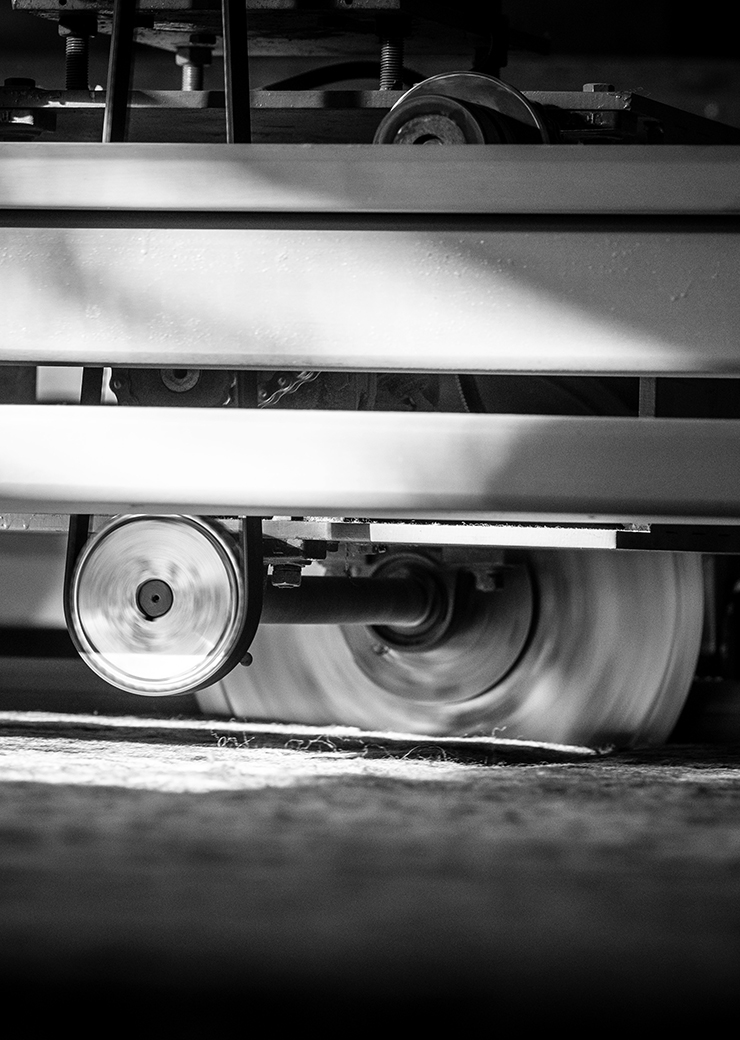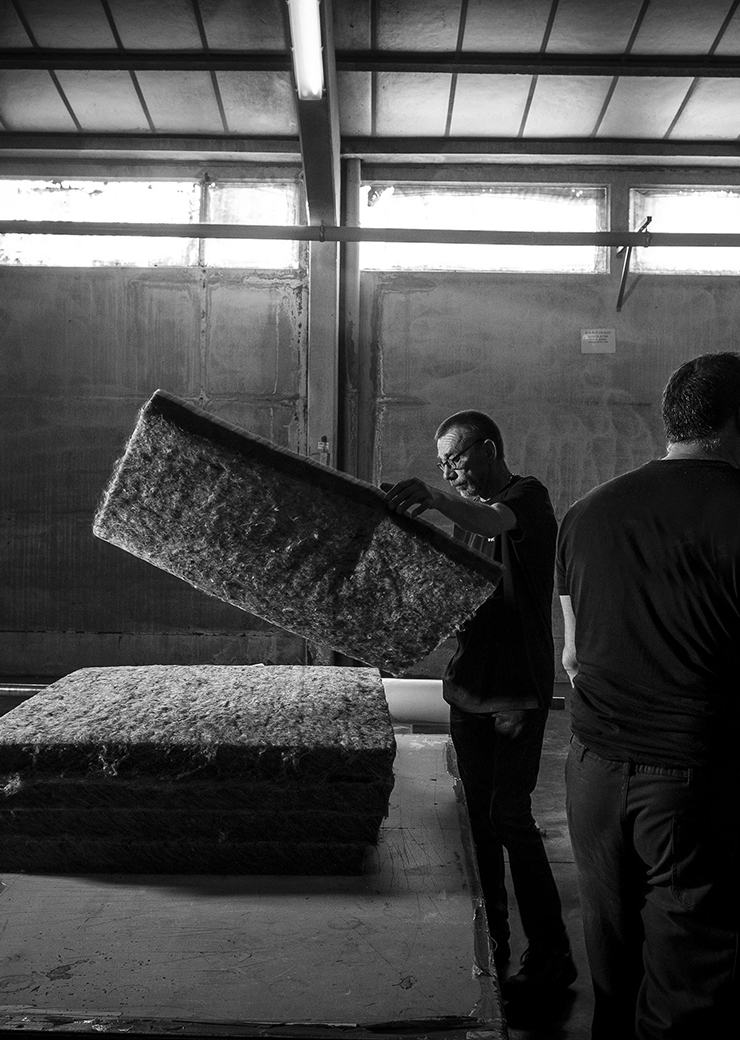100% Belgian
production
Nature has gifted us a unique renewable resource that is essential today.
Our wool comes from shearing sheep raised in Belgium or neighbouring countries. Clipping that are too coarse for the textiles industry are used to manufacture insulating materials, which prevents waste of part of the production. After it is washed, the wool undergoes a natural treatment against fire. It will be used loose or assembled into panels or rolls. To do this, it can be thermo-bonded by adding a 10% to 15% dual-component fibre or transformed into needle felt.

1
Sheep’s wool is a natural resource that is constantly replenished on the backs of sheep. It is an abundant raw material from the agricultural sector, which provides additional activities and income for farmers. Our wool comes from shearing sheep raised in Belgium or neighbouring countries.
Sourcing
Washing
Sheep’s wool is shorn by the farmer. This is then sorted and harvested by the shearer or is sent to an organised collection point by a professional collector. This wool is then transported to one of our partners to be washed. When the wool arrives, an initial inspection is carried out to check the declared weight and its quality. An entry ID number is applied to each batch. For loose wool, the wool will be returned to us directly packaged in 10 kilo bales that are ready to use. For other products, the wool will be sent to the production site.
2


3
Our insulating materials are made exclusively of sheep’s wool, which is used to produce our panels and felts. When designing panels, wool is mixed with a dual-component binding fibre until a homogeneous mixture is obtained. The mixtures are then aerated to open the fibres up as much as possible. They are then blown and stored in hoppers or warehouses.
For acoustic and gardening felts, the wool goes through the same process; however, they are made entirely from sheep’s wool without any blending agents.
Mixing and
pre-opening
Carding
The carding phase prepares the wool fibres for coating. Carding involves combing the fibres in the same direction (lengthwise), similar to brushing hair! The wool is also carded using roller brushes.
4



The forks stir the wool in a tub of hot water.
This occurs at the Traitex wool wash in Verviers..


5
After carding, the wool is coated over several layers in order to obtain a mattress of a certain thickness. Once coating is finished, two different products can be produced:
1) Panels: the wool is placed in the oven to activate the fusion fibres and obtain the desired panel thickness.
2) Felt: the wool is needle-punched to obtain a more or less dense felt of varying thicknesses. These different thicknesses can be used as an underlay under parquet flooring or as mulch for green areas, for example.
Coating, shaping
and cutting
Cutting
Sheep’s wool panels and rolls are used to insulate exterior walls, interior partitions, floors, roof rakes and lofts. Needle-felt products are not recommended for use in walls because of their poor vertical hold. Sheep’s wool is used within framework (preferably wooden framework). The insulation is cut to the width between the frames, plus two centimetres to ensure a spring effect.
6


7
Our products are responsibly sourced and produced in Belgium in accordance with local environmental standards and the highest industry certifications. We work with partners, testing institutes and certifying authorities to verify information concerning the materials, processes and life cycles of products, in order to offer the transparency that is required by our philosophy. We are constantly striving to develop high-quality sustainable products, and are always looking for the best solutions to improve our environmental record.
Transparency
Downloads
Technical sheets
Installation instructions
Certifications
Images
Follow us
© Woolconcept. All Rights Reserved.
Downloads
Technical sheets
Installation instructions
Certifications
Images
Follow us
© Woolconcept. All Rights Reserved.